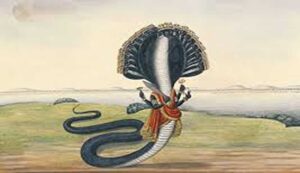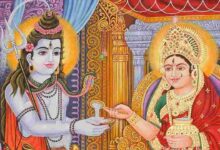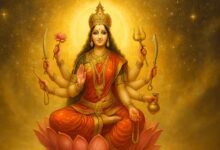The story of Sheshnag: When Vishnu’s most beloved servant abandoned his mother, he was the eldest among a thousand brothers…
The story of Sheshnag: Sheshnag is another name for Shesh, the lord of serpents. Furthermore, Sheshnag has a thousand hoods that hold the weight of the entire universe. Shesh is mentioned in many Puranas, from the Ramayana to the Mahabharata. According to one story, Shesh, in anger, left his mother and fled to Lord Hari.

This is how the birth took place
Prajapati Kashyap, Brahma’s mental son, had two wives named Vinata and Kadru. They were both daughters of Daksha Prajapati. Once, sage Kashyap praised Vinata and Kadru and invited them to ask for any boon they desired. Vinata asked for two powerful sons, while Kadru asked for a thousand powerful serpents. Shesh was the first of the hundred serpents that Kadru gave birth to, as per her boon. Vinata, on the other hand, gave birth to two children.
Penance on Mount Gandhamadana
Kadru was jealous of Vinata, so she once tricked him into gambling and enslaved him. Hearing this, Shesh was deeply saddened. Leaving his mother and brothers behind, he went to Mount Gandhamadana to perform penance. Pleased with his rigorous penance, Lord Brahma granted Shesh a boon.
Brahma granted the boon
Shesh said, “I do not want to live with my brothers because they are all dull-witted and hate Mother Vinata and her sons.” Seeing Shesh’s selfless devotion, Lord Brahma was pleased and said, “Your wisdom will never deviate from dharma.” He further said, “The earth is always in motion, so you should hold it on your hood so that it remains stable.” Therefore, it is said that Shesh’s hood bears the weight of the entire universe.
Sheshnag came to serve Vishnu
Over time, Shesh made it his mission to serve Lord Vishnu. He became known as Ananta Shesh—the One who has no end. He also appeared during the churning of the ocean to support Mount Mandara.
Religious and Cultural Significance
Shesh is mentioned in the Ramayana, Mahabharata, Bhagavata, Vishnu Purana, and numerous other texts. According to folk beliefs, Balarama is also considered an incarnation of Shesh. Shesh not only symbolizes strength and balance but also conveys a profound message of righteousness, sacrifice, and duty.

